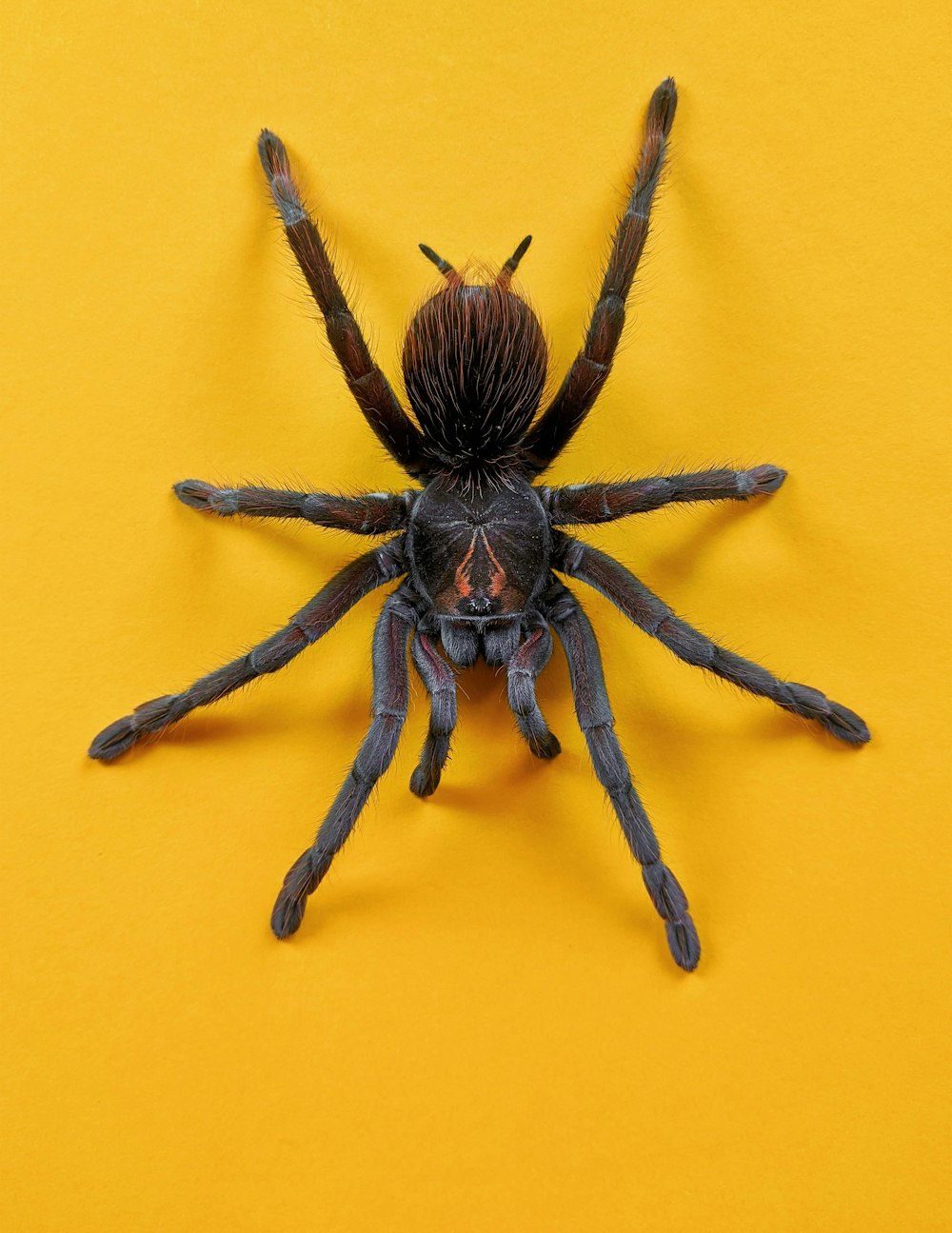Spiders are arachnids, a class of arthropods that also includes scorpions, mites, and ticks. There are more than 45,000 known species of spiders, found in habitats all over the world. Spiders are obligate predators, as they must eat other animals to stay alive. They’re also generalist consumers, as they prey on a variety of organisms, including other spiders, vertebrates (rarely), and their most common prey type, insects. Spiders may inspire thoughts of creative change, but they also provoke fear. They are ambivalent symbols: both creators and predators, they spin translucent, delicate structures, and they consume other life-forms for sustenance. It is estimated that one spider can eat as many as 2,000 insects in a year. Because of their broad appetite, many spiders play an important role in their communities by regulating the density of other invertebrate herbivores and predators.
The term “arachnida” is derived from the Greek word ἀράχνη (aráchnē, ‘spider’), from the myth of the hubristic human weaver Arachne, who was turned into a spider. The mythological figure of Arachne, whose Greek name signifies ‘spider’, offers potential insight for navigating the multiple, tangled threads that structure marginality. Interweaving themes of creativity, resistance and power, her story is an apt parable for the politics of voice and representation.

Pallas allant voir tisser Arachné. Ovide, Métamorphoses, Bibliothèque municipale de Lyon, Ms.742, f°97v, 1385.
Arachne in Ovid’s Metamorphoses is a young woman whose weaving skills and provocative creativity (depicting ‘romantic’ affairs of gods as violent, vain or frivolous) refuses to attribute her illustrious skill to Pallas Athena and challenged the goddess Athena, inventress and protectress of the skill, to a weaving competition. Athena accepts, depicting the majesty of the Olympian pantheon and the punishments incurred by those who dared to challenge their authority. The defiant Arachne, by contrast, weaves a tapestry revealing the gods in a less than favorable light, portraying their rape of mortal women. Her work did not conform to the hegemonic knowledge generated by Gods. She wins the contest when Athena can find no fault with the superior quality of her weaving. In a rage, Athena tears up the tapestry and torments Arachne, striking the young woman with her shuttle. Arachne then tries to escape the goddess’s wrath by hanging herself, and Athena finally decides to take pity and spare her life – but in doing so, she transforms Arachne into a spider.
In feminist writing and activism, including Goddess feminist narratives, the motif of spinning and weaving symbolically asserts women’s creativity and political agency. The story of Arachne has served as a way of naming, celebrating and reversing women’s marginality – albeit without attending to (particularly racial) difference. The epistemology of resistance articulated through the Arachne myth is based on the transformative (hyper/inter)textuality to which the existing myth presents the embodiment of women’s resistance in the continuous process of women-becoming. More recent feminist theories, which insist on the potential parabola, that is, a critical modelling of feminist poetics based on the original myth of Arachne, set forth the category of gendered identity which corresponds to the notion of authorship and as such also invokes a possible figuration of creative and productive women in relation to the dominant culture. It’s a figuration based on the semantic relation between Arachne and Athena (feminocentric deconstruction vs. phallocentric transformation of dominant discourses). In ancient texts women’s authorship was constructed through the activity of different mythological weavers, knitters and embroiderers who, while creating and producing material goods, fabrics and such, had often used the “texture” of this fabric to write down their messages, opinions and visions. They use it as a subversive strategy to resist the patriarchy and other kinds of systematic oppressions, as well to resist different forms of strategic violence.
Feminist reading of the Arachne myth, through the lenses of material history (of the ancient world), reveals the knowledge of censored/punished textuality, and therefore also the basic epistemological postulation in theorizing the meaning of politically engaged women’s authorship.
Finally, the Arachne myth points to the mapping of reality, engaged politics of the production of knowledge, but also the strife for social redistribution of capital and power, material production and its work conditions, in case we perceive Arachne as the archetype of woman, textile worker, oppressed and subsequently belligerent. Arachne is a symbol of women’s struggle for equality and social rights, as she signifies the social position of resistance to the dominant discourses of power and class relations which perpetuate oppression, violence and patriarchy. The web she produces is a symbol of texture, text/textuality, or textile, the cornerstone of emancipatory narratives, movements and productions, as well as structure of epistemological transformation of the concepts of sociality, equality and liberty. Accordingly, this lost, censored and forgotten mythological formula of metamorphosis indicates paradigmatic marginalization, re-semantisation and punishment of all the efforts to dispose of repressive forms of power and exploitation, the patriarchal forms of social historicising of material practices, production and resistance.
References
https://www.britannica.com/animal/arachnid
https://en.wikipedia.org/wiki/Spider#Non-predatory_feeding
https://kadist.org/arachne/
Maya, K. (2019). Arachne’s Voice: Race, Gender and the Goddess. Feminist Theology, 28(1), 52-65.
